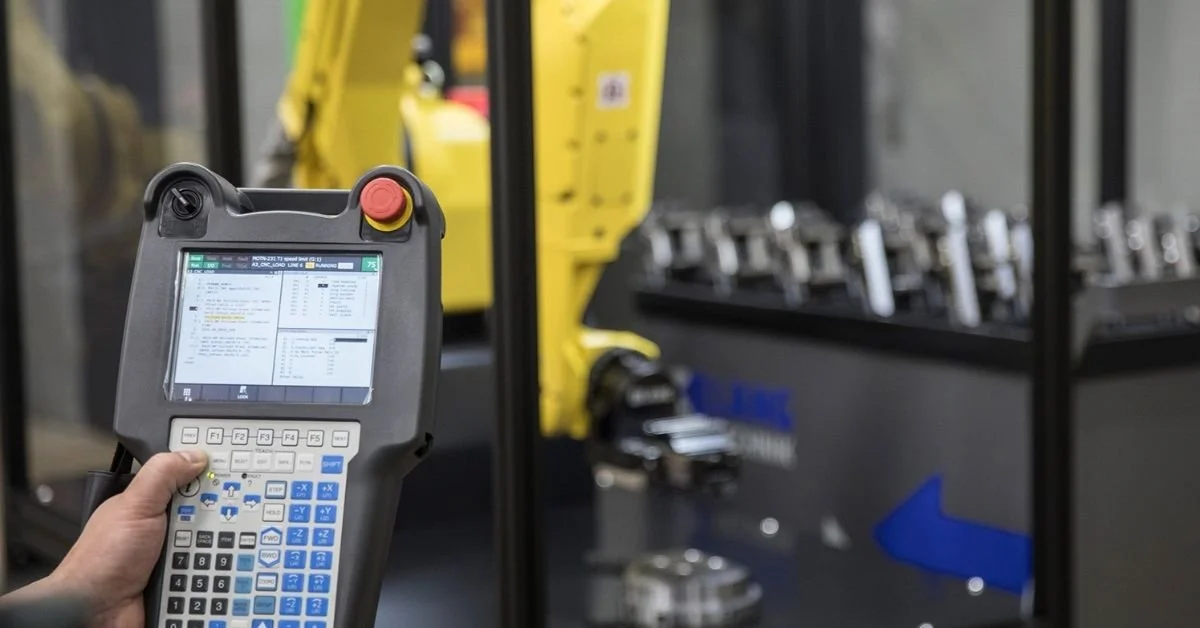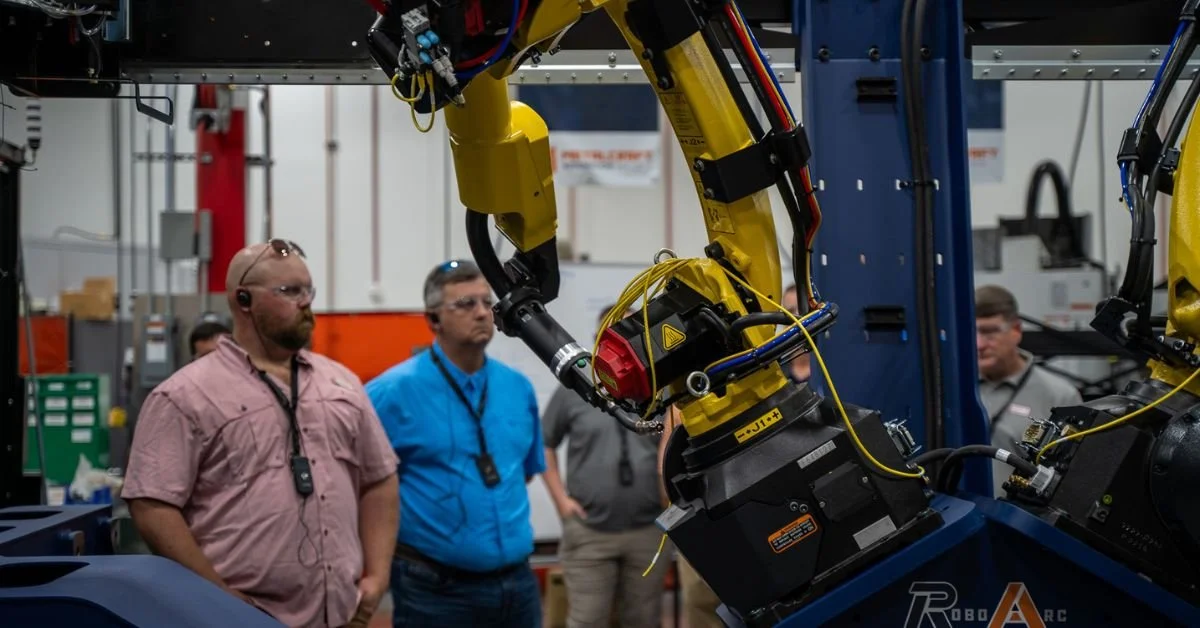When it comes to manufacturing precision parts, facility managers must make a fundamental choice between CNC automation or manual machining. Both methods bring unique advantages and challenges to the table, and each can significantly impact the quality, efficiency, and cost of your production process. To make the right decision, weighing the differences between CNC automation versus manual machining output is a must.
Reproducibility
CNC machines excel in producing identical parts at scale with flawless precision, run after run. This reproducibility is due to their ability to follow programmed instructions without deviation. Manual machining, while capable of great accuracy in small batches, often struggles with slight variations when creating large quantities of the same part. These variations can affect the consistency and functionality of the final product, especially in industries requiring tight tolerances.
Speed of Production
Automated CNC systems significantly reduce production time by working faster than manual methods and eliminating the need for constant intervention. Less intervention allows teams to complete larger orders in shorter timeframes, enhancing overall efficiency. In contrast, manual machining requires hands-on work for each step of the process, making it slower, especially when producing high volumes.
Complex Geometries
CNC machining is ideal for handling intricate designs and fabricating complex parts, thanks to its ability to execute multi-axis operations and follow advanced programming. It can produce shapes and details that would be nearly impossible to achieve consistently through manual machining. While manual methods are versatile and excellent for simpler tasks, they are limited when it comes to detailed or highly complex geometries.
Cost Efficiency for Large Volumes
CNC automation becomes increasingly cost-efficient as production scales up. Faster turnaround times, minimal material waste, and reduced labor make it ideal for high-volume manufacturing. Manual machining, however, is typically more economical for low-volume, custom, or prototype work where the upfront CNC programming costs may not be justifiable.
Setup Time
CNC machining generally requires more time for initial setup to create the program and configure the machine. However, once set up, it automates repetitive tasks and compensates for the time invested. Manual machining has shorter setup times but requires constant operator attention, making it labor-intensive throughout the production process.
Material Utilization
CNC technology optimizes material usage through precision and efficiency, minimizing waste and significantly reducing production expenses. These machines can make exact cuts and ensure you effectively use every inch of material, which is especially important when working with expensive or rare materials such as titanium.
In contrast, manual machining relies on the skill and judgment of the operator, which can sometimes result in inaccuracies and lead to higher material waste. Over time, CNC technology proves to be more cost-effective because it maximizes resource utilization and minimizes unnecessary expenses.
Human Error vs. System Error
One of the greatest benefits of CNC automation is its ability to dramatically reduce human error. Manual machining, while highly reliant on the operator’s skill, is prone to miscalculations, uneven cuts, and inconsistent finishes. CNC machines, on the other hand, follow precise programming to complete tasks with minimal deviations. However, they are not entirely immune to system malfunctions, improper programming, and software bugs.
Manual machining, while more prone to human error, allows experienced operators to identify and correct mistakes in real-time.
Flexibility and Customization
Manual machining is often praised for its flexibility, making it ideal for unique projects or when sudden design changes arise. Operators can adjust settings or modify designs on the spot, enabling quick turnarounds. CNC machines, while reprogrammable, require more time to implement design changes. However, once you’ve programmed them, CNC machines can replicate complex designs with perfect consistency, making them more suitable for projects requiring high levels of precision.
Maintenance and Downtime
CNC machines, while highly efficient, rely on regular maintenance to ensure peak performance. This maintenance includes software updates, lubrication of moving parts, and calibration of tools, which can lead to occasional system downtime.
Manual machines are simpler in design and tend to experience fewer technical issues, though they still require routine maintenance for cleaning and part replacements. Despite their simplicity, occasional breakdowns or worn parts in manual machines can still disrupt workflows.
Labor Costs
CNC machining significantly reduces labor costs by automating production. These machines can operate unattended for long periods, allowing a single operator to oversee multiple machines or focus on other tasks. This efficiency makes CNC an ideal choice for industries looking to streamline production and cut staffing expenses.
In contrast, manual machining requires continuous operator involvement. While manual machining provides hands-on control, the higher labor demand can make it less cost-effective for industries with extensive or repetitive production needs.
Learning Curve
CNC machines come with a learning curve, as operators must understand both the software and hardware to program and operate them effectively. Training can take time, but once mastered, CNC systems allow for faster production, greater precision, and fewer mistakes. Operators can quickly adapt to handle intricate designs and large-scale projects with ease.
Manual machining relies heavily on the operator’s expertise and experience. It requires ongoing skill development, as precision and consistency depend on the operator’s ability to make accurate cuts and adjustments.
Scalability
CNC machines excel in scalability, making them an excellent choice for industries experiencing growth or requiring large-scale manufacturing. Once set up, these machines can run continuously, producing high volumes of products without compromising on quality or efficiency. This capability allows businesses to meet rising demand without needing to invest heavily in additional resources or manpower.
Manual machining, while adaptable for custom or small-scale projects, struggles to keep pace with increased production needs. As demand grows, the limitations of manual processes become apparent, making CNC automation the more practical choice for businesses aiming to scale operations efficiently.
The decision between CNC automation versus manual machining output boils down to evaluating your specific project requirements. CNC technology excels in speed, precision, and scalability, making it ideal for mass production and complex designs. Manual machining, however, retains a significant edge in flexibility and craftsmanship for smaller, custom projects. If you’re ready to embrace CNC automation at your facility, Metalcraft Automation Group is here to help. We can help you achieve the perfect balance of quality and efficiency.



